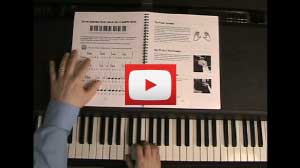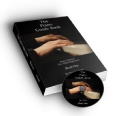More About Time Signatures
The time signature is the two stacked numbers at the beginning of a piece of music. The top number tells us how many beats or counts per measure, and the bottom number tells us what kind of note receives one beat or count.
The 4/4 Time Signature

4/4 time is the most commonly used signature in most styles of music. In 4/4 time, there are four beats per measure, and each beat receives a quarter note. That means that in 4/4 time, we count "1,2,3,4" for each measure. 4/4 time is also called "common" time, and can be represented as a letter "C" at the beginning of a piece of music.
The "Common Time" and "Cut Time" Signatures

Cut time is represented by a letter "C" with a vertical line drawn through it, much like a "cent" sign. In cut time, the notes are written as though it has four beats per measure, but the music has a pulse that sounds like two beats per measure. Cut time is often used for pieces written in 4/4 that are intended to be played fast.
Other Time Signatures

2/4 time is two beats per measure, and the quarter note gets one beat. Though not used in popular music very often, there are many classical piano pieces in 2/4 time.
3/4 time is also known as "waltz" time. It has 3 beats per measure, a quarter note gets one beat. 3/4 is probably the second most common time signature in piano literature.
5/4 time is more unusual, with 5 beats per measure. Two popular examples are "Take Five," the Dave Brubeck jazz classic; and the TV show theme "Mission Impossible."
Other signatures where the quarter note receives one beat included 6/4, 7/4, 9/4 ,etc. These are much less commonly used.

6/8 time has six beats per measure, and an eighth note receives one beat. In jazz music it is used for a "jazz waltz" feel.
12/8 time is more often used as a variation of the 4/4 time signature. There are four strong beats per measure, but each beat has a triplet feel.
Count 12/8: "1-and-a, 2-and-a, 3-and-a, 4-and-a"
Other eighth note based signatures include 3/8, 5/8, 7/8, 9/8, 11/8 etc. These are much less commonly used.
Start Playing Piano Today with the Piano Guide Quick Start Course!
Easy to follow step-by-step lessons designed for adult beginners. The next best thing to private lessons!
What You'll Learn:
- Notes on the piano/keyboard
- Proper fingering
- C major scale
- Chords
- How to read music
- And much more!

Video lessons - watch as I play everything for you.

